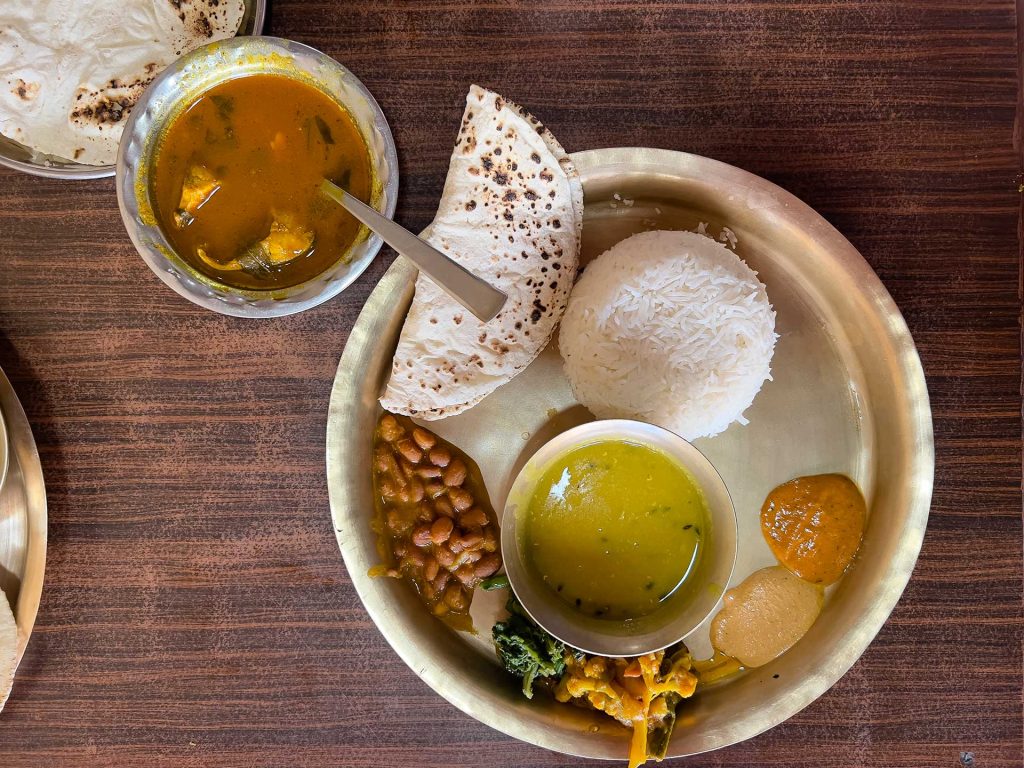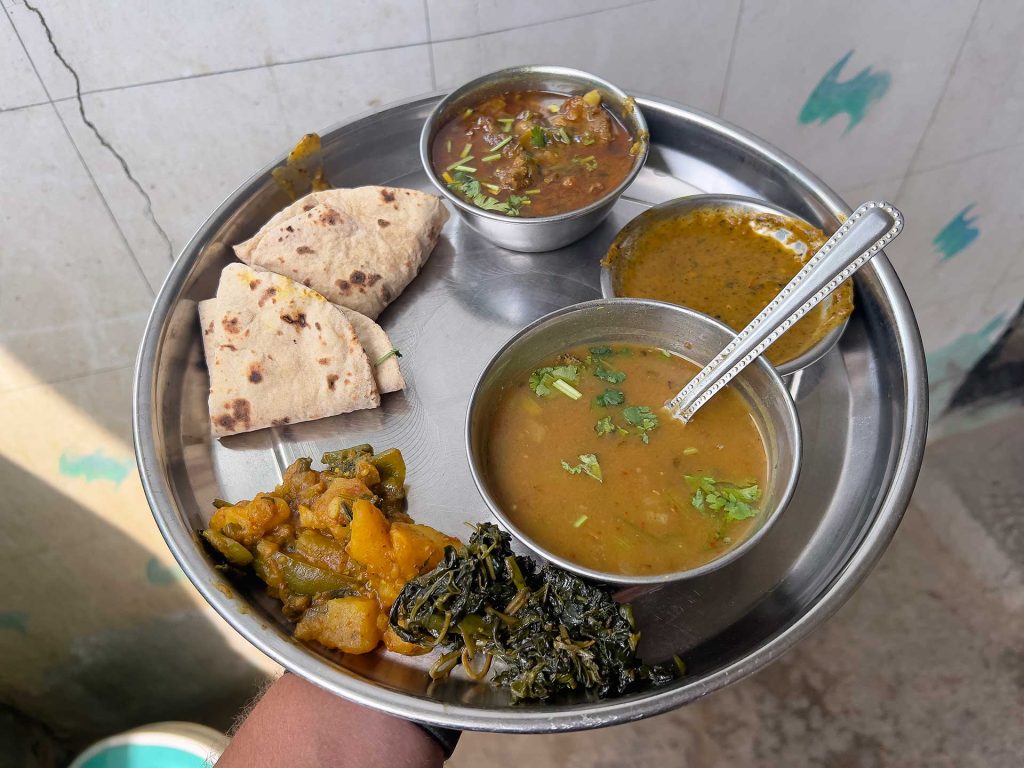Nepal runs on the power of dal bhat
Dal bhat, a lentil stew and rice, is a Nepali superfood that powers people to climb mountains, go to school, and do daily chores.
Text: Elisa Rimaila
Photos: Antti Yrjönen
WHETHER WE COOK bacon and eggs breakfast, eat ramen for lunch, or prepare fish and potatoes for dinner, in Nepal the same dal bhat is enough for every meal of the day. That’s true whether we are in the Himalayan mountains, in the valley surrounding the capital Kathmandu or on the border of India in the Terai region. In fact, they call it ’24 hour dal bhat power’. Nepalese people of all ages spoon lentil stew and rice on their plate for the most important meals of the day.
But what exactly is this Nepalese superfood and why is it so popular? The rich protein of lentils combined with the carbohydrates of rice effectively tops up both the stomach and energy reserves, and many people find the raw materials in their own fields or vegetable gardens. Spinach, cauliflower, potato, fresh herbs, spices and yogurt are usually added to the dish. Vegetables and other side dishes not only provide eye candy, but they also add vitamins and minerals to the dish, such as calcium, iron and potassium.

According to stories, the roots of dal bhat go back centuries. The dish is known to have developed in the countryside, where farmers doing heavy physical work in the fields needed nutrient-dense but locally produced and cheap food right from the morning to get through the long day. Since then, dal bhat has become something of a symbol of Nepali culture, cherished and prepared in the kitchens of every Nepali home and in traditional restaurants from the cities to the remotest mountain villages.
Dal Bhat is most commonly eaten with fingers. At lunch, Nepalese wash their hands and scrape the lentil stew and side dishes with their accustomed fingers using lumps of rice or the local flat roti bread. Eating with your fingers is an art form of its own when there is steaming stew and rice in front of you.
In traditional restaurants, cooks stir lentil stew with the heat of smoking campfires. The waiters, on the other hand, go around the tables in turn with a large pot of rice, a pot of lentils or a dish containing vegetable curry that serves as a side dish, asking the diners what they would like more of. Many people also add preserved pickles and clarified butter, or ghee, to the food for a strong taste. At the end of lunch, no one seems to be in a hurry to leave. Your stomach is so full that the easiest thing would be to just sit comfortably on the bench for hours.
